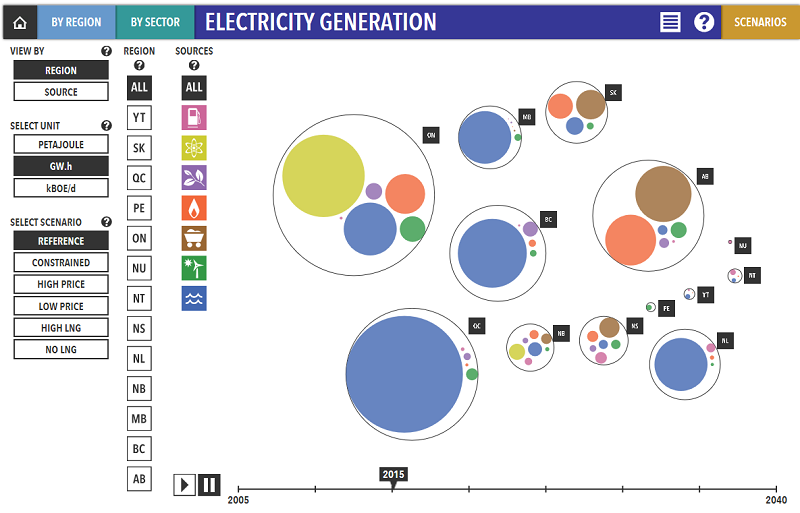Market Snapshot: Total renewable capacity, led by wind energy, to grow considerably in the near-term
Release date: 2016-05-24
The National Energy Board’s most recent long-term energy outlook, Canada’s Energy Future 2016, suggests that total renewable electricity generating capacity will increase rapidly over the next three years and then more gradually until 2040. The projected short-term growth is largely based on known projects already under construction, or in the planning phase.
Wind capacity leads this short-term growth, with just over 3 800 megawatts (MW) of capacity projected to be added from 2016 to 2020. The largest additions are in Ontario (1 580 MW), Quebec (970 MW), and Alberta (624 MW). On a percentage basis, wind represents the fastest growing generation type over that period, surpassing natural gas, which is expected to grow nearly 4 400 MW between 2016 and 2020.
Between 2020 and 2040, wind capacity growth slows, with annual additions averaging 200 MW. By the end of the projection period, installed wind energy capacity in Canada totals 19 450 MW.
Figure Source and Description
Source: Canada’s Energy Future 2016
Description: This stacked bar chart illustrates historical and projected wind energy capacity in Canada broken down by province or region. Total wind energy capacity in Canada is expected to grow strongly from 11 670 MW in 2016 to 15 506 MW in 2020. Growth slows between 2020 and 2040, with average annual capacity additions of 200 MW. The majority of the growth occurs in Ontario, but substantial increases also occur in Quebec and Alberta.
Photovoltaic solar also grows quickly in the near term, adding more than 2 300 MW of capacity from 2016 to 2020. This increase is almost entirely in Ontario, where incentives have encouraged new solar installations.
Biomass, which uses the combustion of organic waste materials such as wood pellets to generate power, is expected to increase by 370 MW from 2016 to 2020. Most new biomass capacity is added in British Columbia, Alberta, Quebec, and Ontario, where two former coal-fired units were recently converted to biomass.
In total, non-hydro renewable capacity is expected to increase from 17 000 megawatts (MW) in 2016 to nearly 23 000 MW in 2020. In 2020, these technologies make up 15 per cent of total capacity and seven per cent of total generationFootnote 1. Over the longer term, growth in total non-hydro renewable installations slows but still adds 6 300 MW of capacity between 2020 and 2040Footnote 2.
Exploring Canada's Energy Future
The National Energy Board has unveiled an interactive new tool, “Exploring Canada’s Energy Future”. The tool presents our most recent outlook in a user-friendly, interactive graphic format, conveying complex information in easily understood "visualizations". For example, the Explore Electricity Generation visualization allows you to customize energy sources, tailor specific regions and timelines, and then share or download the image. Tell the story that interests you most.

- Date modified:
